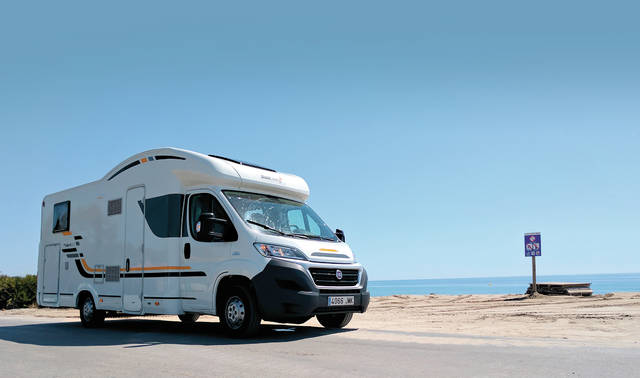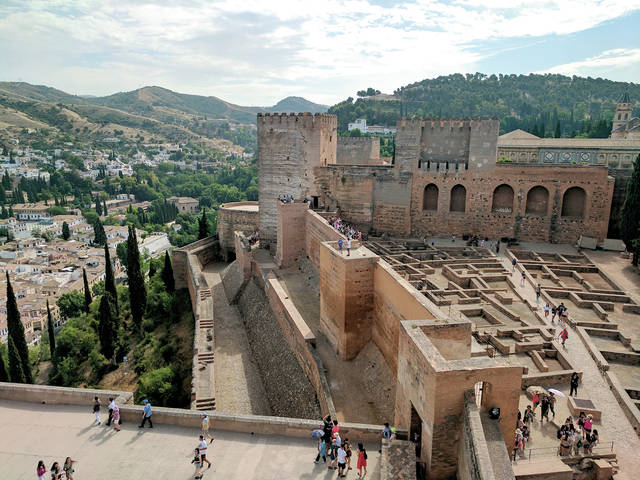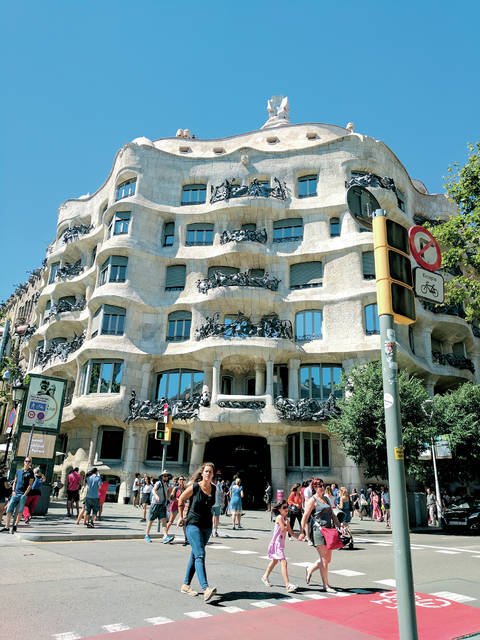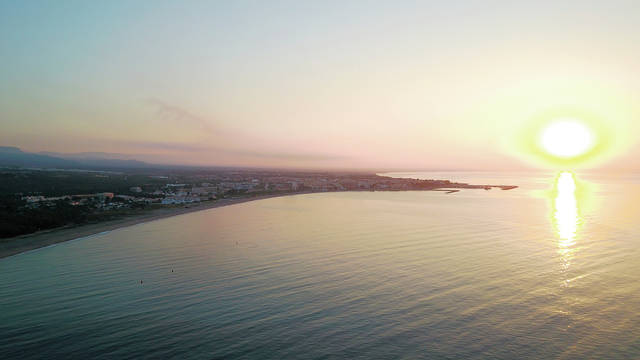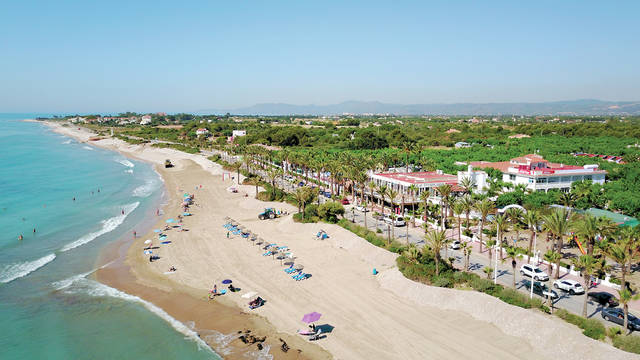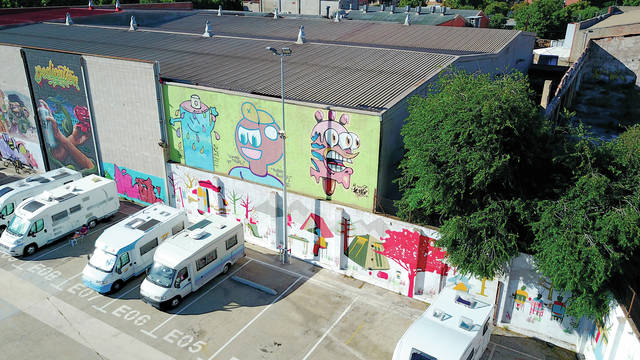RV-tripping Spain: Coastal campgrounds, classy caravans
BARCELONA, Spain — Vacationing during Spain’s touristy summer season doesn’t have to mean overcrowded attractions or pricey hotels. Keep the crowds and high prices in the rearview mirror by renting a motorhome or RV (usually called camper vans or caravans in Europe) and experience Spain’s scenic Mediterranean coast through seaside towns, ancient ruins, bucolic orchards and sprawling badlands.
ADVERTISING
CAMPER VAN 101
Before embracing your inner Kerouac, if you’re American you’ll need to get an International Driving Permit from AAA, http://www.aaa.com/vacation/idpf.html , or the American Automobile Touring Alliance (AATA), http://aataidp.com/. It’s issued in person or by mail and is valid for a year.
For coastal routes, you can choose autopistas, toll roads denoted with the letters AP, or free motorways, generally called autovias, marked with the letter A. You can pay tolls by credit card or cash, but be warned that they add up.
NOT YOUR PARENTS’ RECREATIONAL VEHICLE
You may have memories of the family’s vintage behemoth van, but today’s savvy road trippers know that modern motorhomes come in smaller, sleeker packages with nearly every amenity imaginable. Using the van’s various features is surprisingly uncomplicated, but you do need to know how to drive with a manual transmission. Do not drive into city centers, which typically have narrow, winding streets, or you could get stuck. Park farther out and take metros in.
Barcelona’s Orson Rent, http://en.orsonrent.com/ , offers airport pick-up and drop-off, plus campers that sleep two to five people, with bathrooms, showers, refrigerators, freezers, stove tops, two double beds and optional add-ons like bikes or barbecue grills. Rentals run 175 euros daily for summer high season, 130 for September and 110 other times. Budget another 35-50 euros nightly for campsites in peak season. Amenities like Wi-Fi and electricity are extra. In some places, vans may park overnight in public spots, but towns are less tolerant of this during crowded summer months.
Know the difference between a caravan — with the living unit trailer towed behind the car — and an autocaravan, where the living unit is attached to the driver’s cab.
PLAN YOUR PIT STOPS
BARCELONA
What to do: Head to the rooftop terrace at the Hotel Barcelo Raval for stunning (and free!) 360-degree views, https://www.barcelo.com/en-us/hotels/spain/barcelona/barcelo-raval/ .
Sample local cuisine and cava (Catalonia’s sparkling wine) while exploring Barcelona on a sidecar tapas tour, http://brightsidetours.com/ .
Don’t miss Antoni Gaudi’s iconic works, including Casa Batllo, Park Guell and La Sagrada Familia. Beat the lines at the breathtaking basilica by purchasing tickets in advance, http://www.sagradafamilia.org/en/ .
Where to camp: CityStop, http://citystopbcn.com . It’s all about location at this bare-bones parking lot squeezed between high-rise buildings. The overnight campsite is a quick walk to the L2 and L4 metro lines and offers bathrooms, showers and Wi-Fi.
Another option, about 135 kilometers (83 miles) south, is the family-run Camping Cala d’Oques, http://www.caladoques.com/ . Fall asleep to the sounds of waves crashing at this small campsite on the beach in Tarragona.
PENISCOLA
What to do: Skip the busy beach in this tourist hot spot and head to the impressive Knights Templar castle and former papal residence, which juts into the clear blue waters.
Where to stay: The oceanfront Camping Playa Tropicana, http://www.campingplayatropicana.com/ , in the village of Alcossebre. This upscale campsite offers indoor and outdoor pools and Jacuzzis, laundry room, supermarket, restaurant, beauty salon, car wash and playground. It’s also steps from a quiet beach and the Michelin-starred restaurant Can Roig, http://www.canroig.es .
VALENCIA
What to do: Chow down on meat-based Valencian paella in the birthplace of the classic rice dish.
Learn about Valencian history and culture through its thriving street art scene on a graffiti tour of old town, http://www.valenciaurbanadventures.com .
Snack like a local at Horchateria El Collado with sweet pastries called fartons dunked in horchata de chufa, a sugary drink.
Wander the futuristic glass and concrete complex known as The City of Arts and Sciences, home to Valencia’s impressive Principe Felipe Science Museum, www.cac.es/en/museu-de-les-ciencies.html , and Spain’s largest aquarium, https://www.oceanografic.org/ .
CARTAGENA
What to do: This picturesque port city is home to historic sites including a Roman theater and military fortress, Bateria de Castillitos, which offers panoramic views of Cartagena Bay.
Where to stay: Camping Lo Monte, http://campinglomonte.com/ , north of Cartagena, near the beach in Alicante. Its well-manicured grounds offer swimming pools, a gym, restaurant, spa and group activities.
MOJACAR
What to do: Explore shops and cafes in the winding streets of charming old town Mojacar, a hillside village dotted with white buildings. Or grab a drink and watch the sunset over the Mediterranean in Mojacar Playa, the trendy beachfront part of town.
GRANADA
What to do: It’s all about the Alhambra. The immaculately restored ninth century complex is a UNESCO World Heritage site and one of Spain’s most-visited attractions.
You could lose an entire day exploring the ornate, tiled palaces, gorgeous gardens and military fortresses with sweeping city views. Buy tickets online as they can sell out weeks in advance, https://www.alhambradegranada.org/ .
Regroup after a long day with a massage and Arabian bath experience at the tranquil Hammam Al Andalus, http://granada.hammamalandalus.com/en/ .
Where to stay: Camping Las Lomas, http://www.campinglaslomas.com/en/ , a wooded mountain retreat east of Granada. Campers will find breathtaking views of the valley and Canales Reservoir, as well as mini golf, table tennis, a swimming pool, sauna, restaurant and supermarket.


